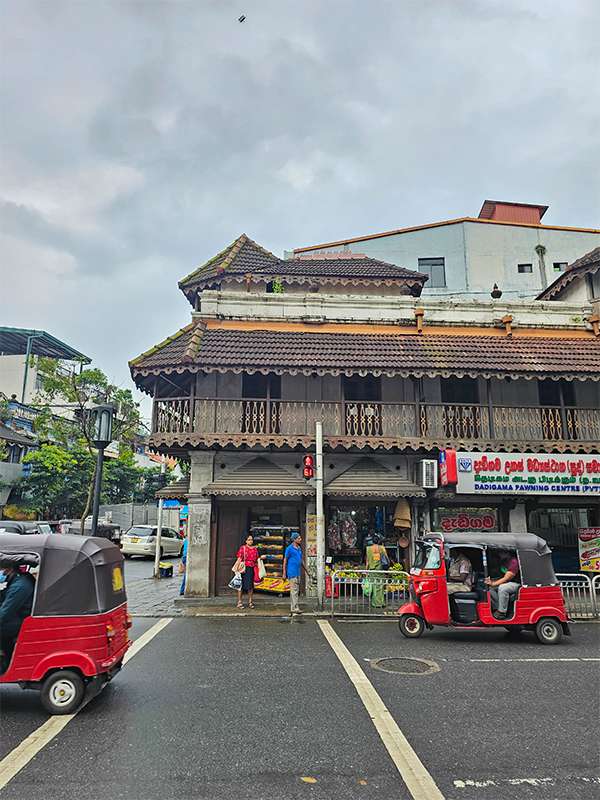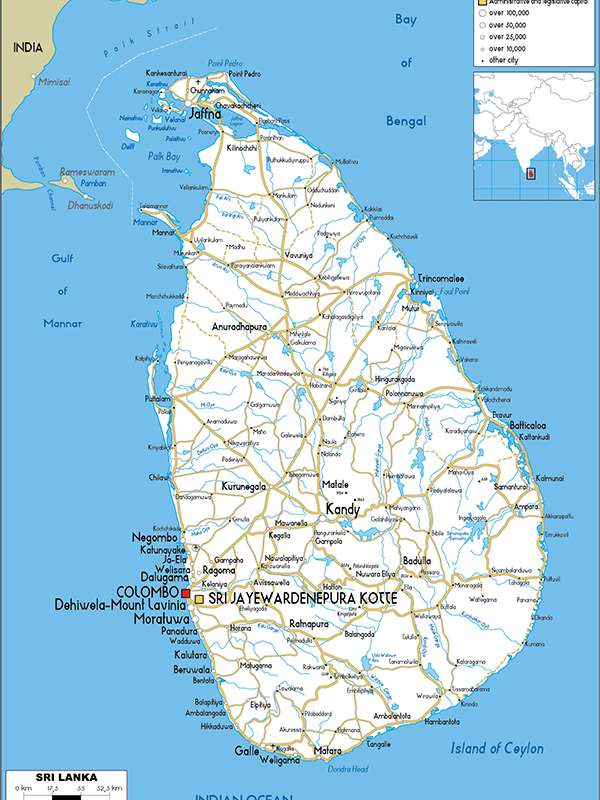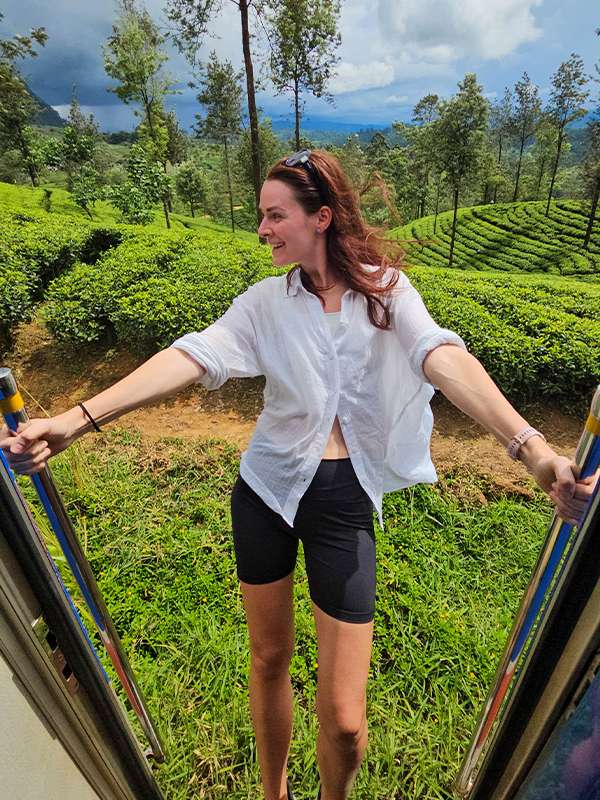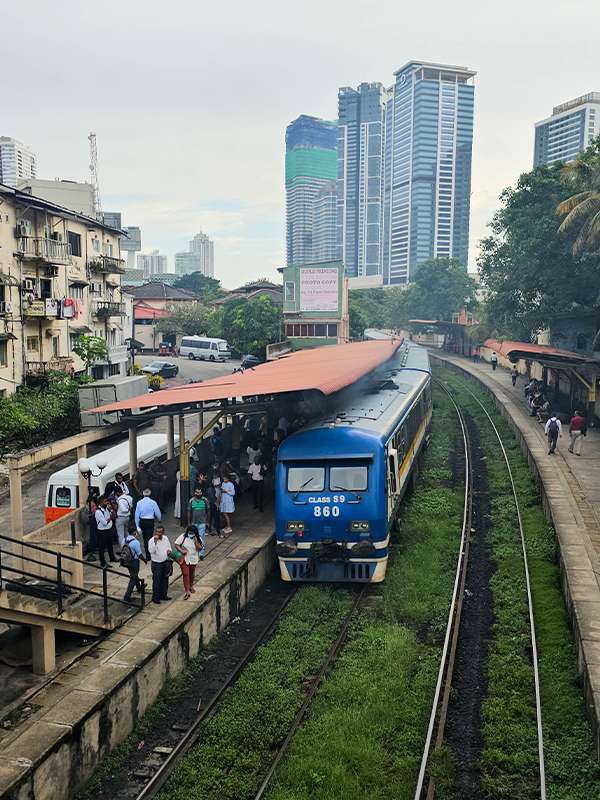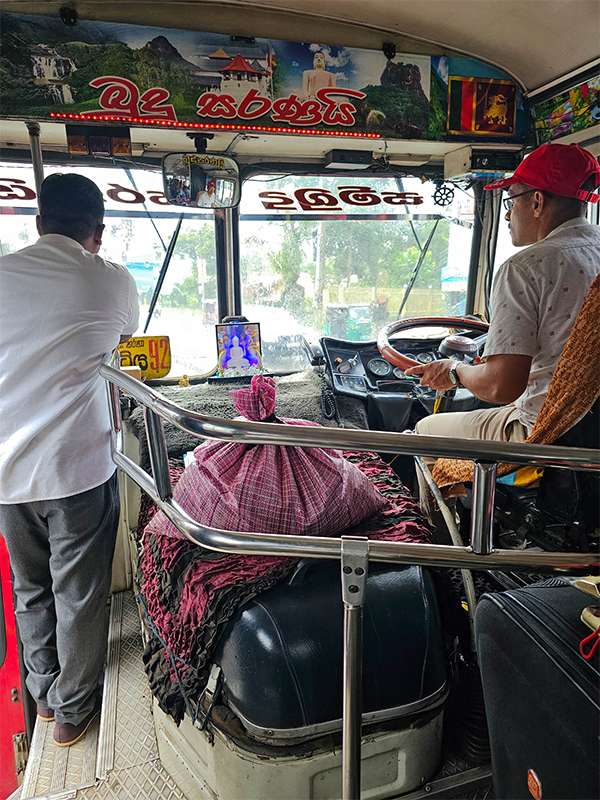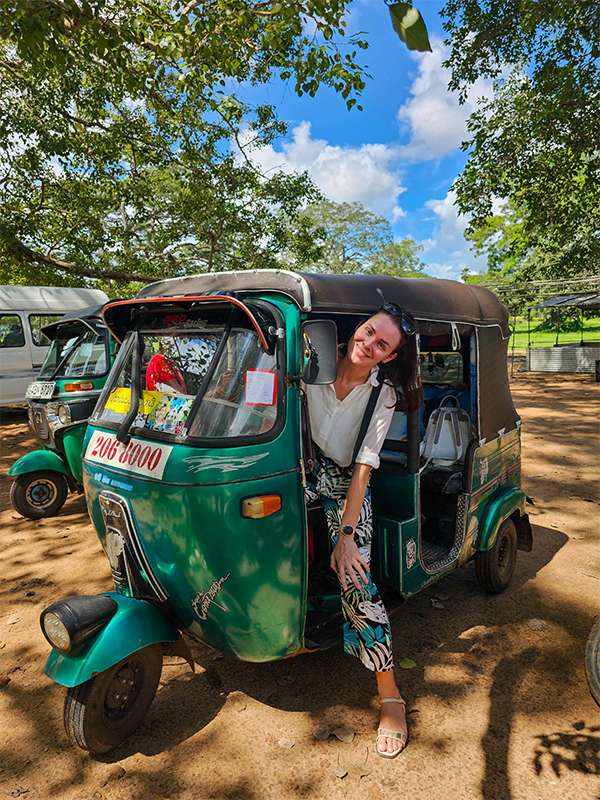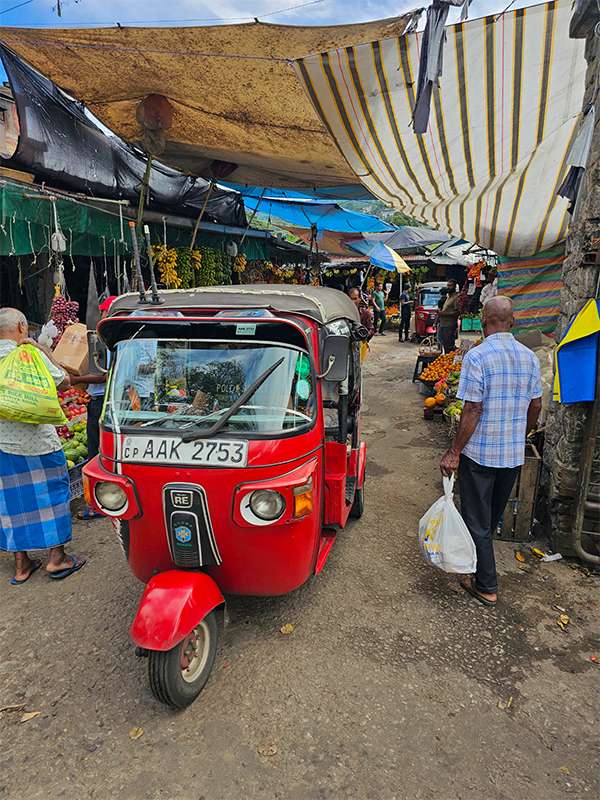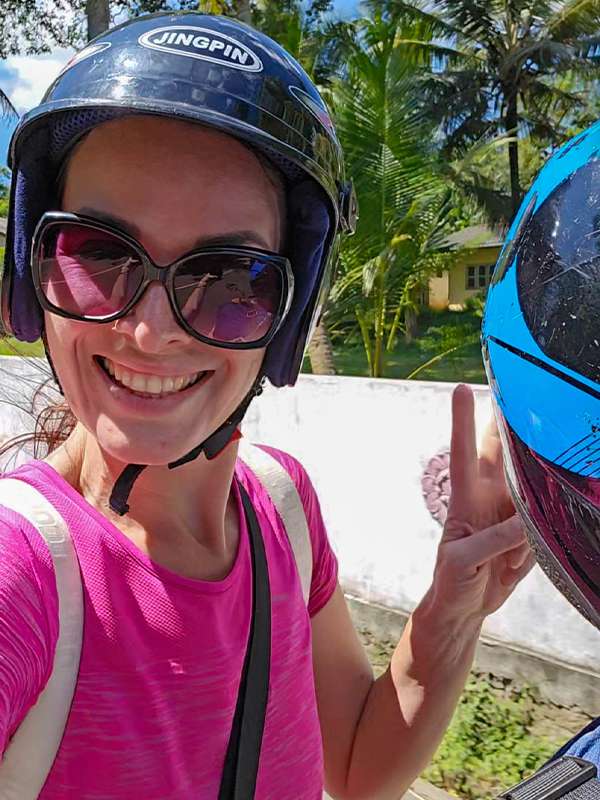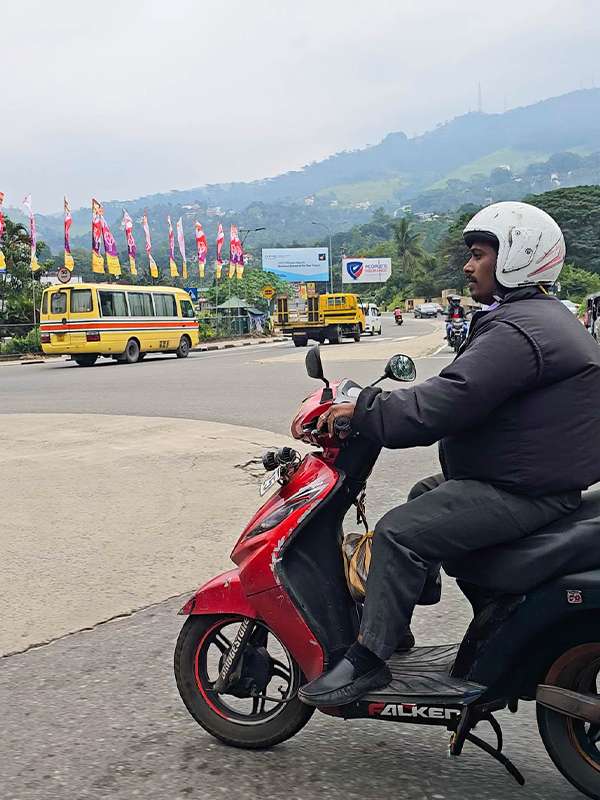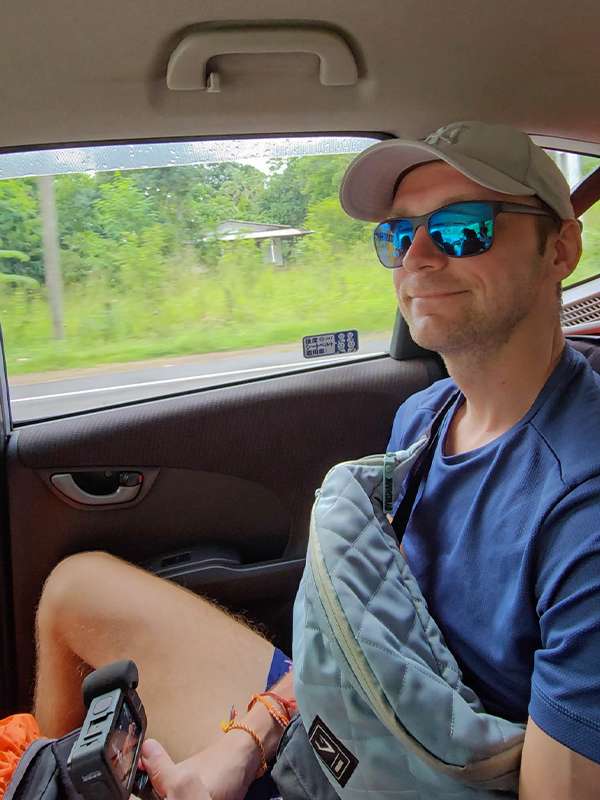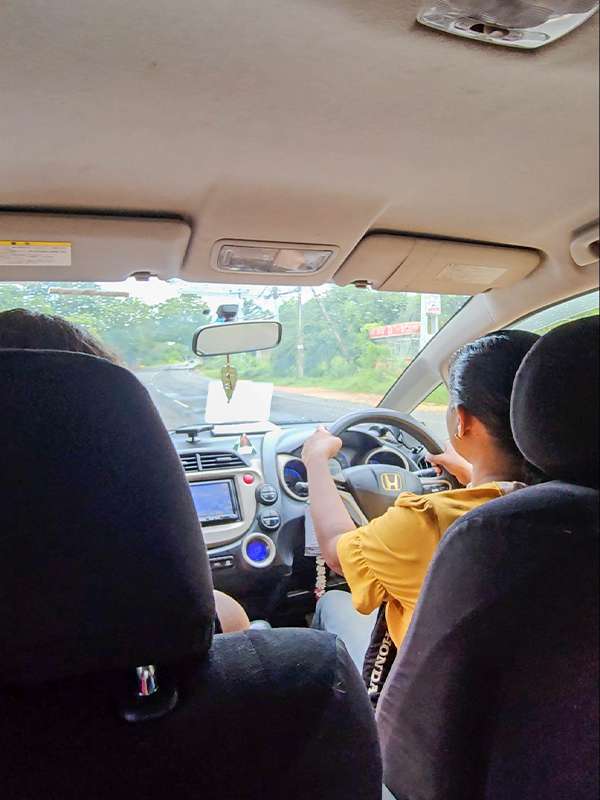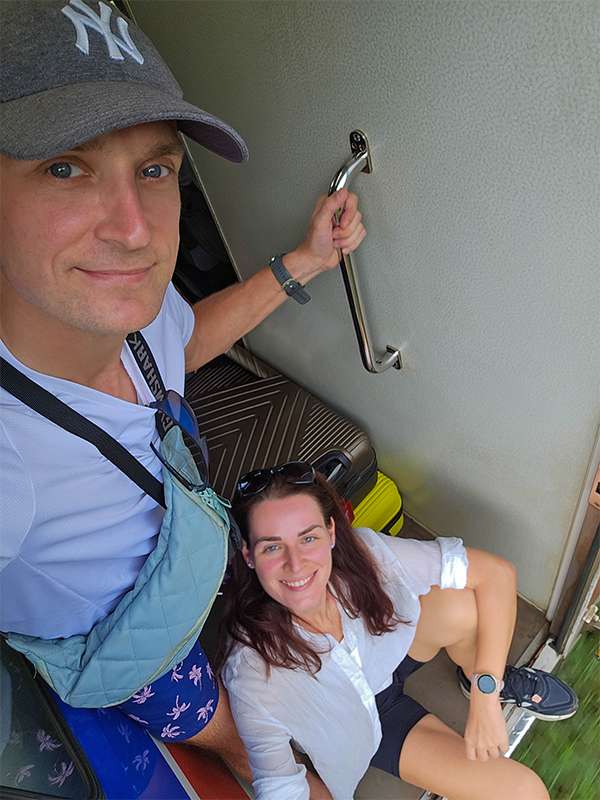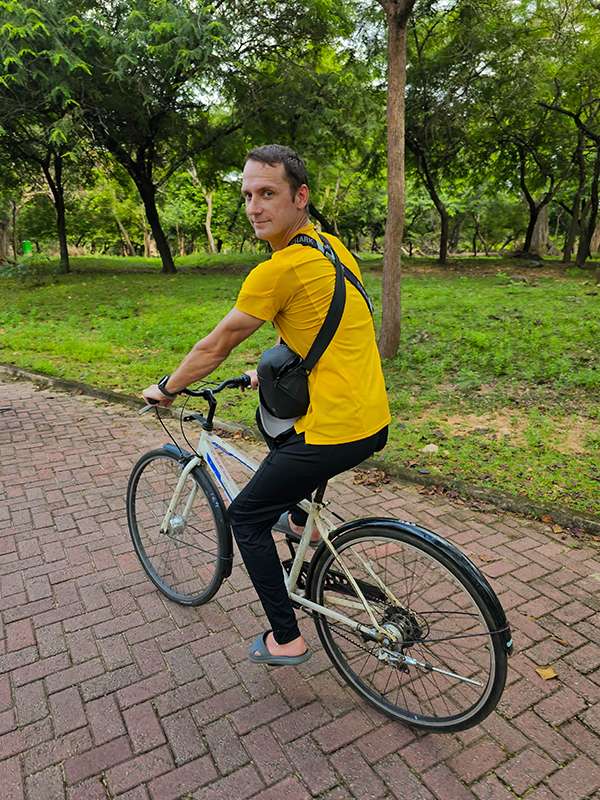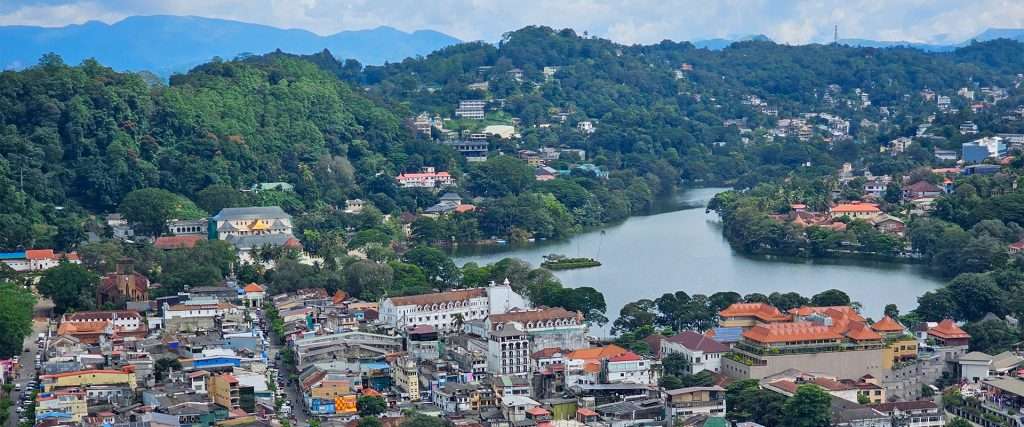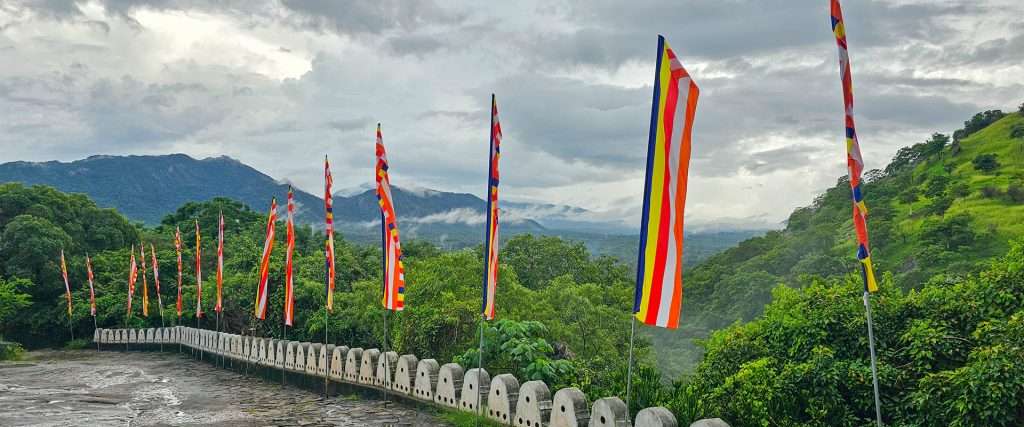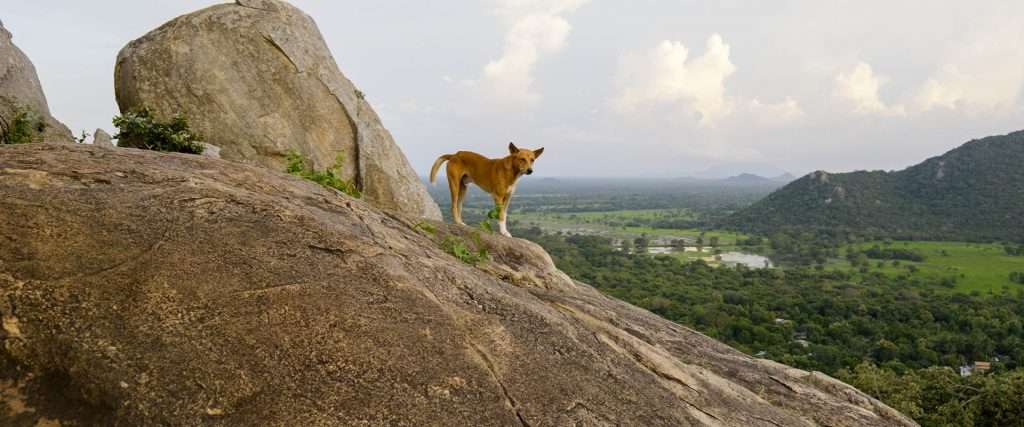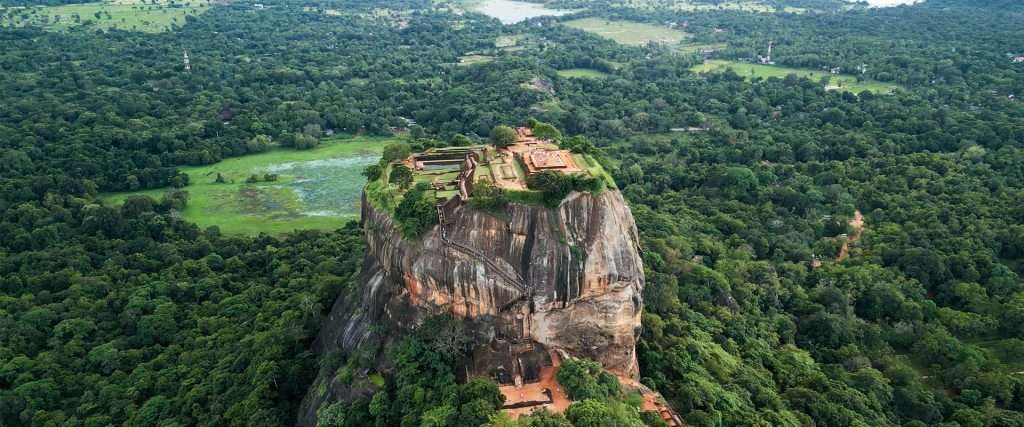Planning a trip to Sri Lanka can feel exciting — and a bit overwhelming — especially when it comes to transport. In this guide, you’ll learn the best way to get around the island, from scenic train journeys through tea-covered hills to coastal buses and tuk-tuk road trips.
Whether you’re travelling to Sri Lanka for the first time or returning to explore new destinations, this guide breaks down how public transport works, the cost to travel Sri Lanka, and the most convenient options for every budget.
I’ve also added practical tips from our own journey to help you choose what fits your comfort and route, so you can make the most of your time on the road.
For a complete route across the country, check out my 1-Month Sri Lanka Itinerary, which links the Cultural Triangle, Hill Country, and South Coast into one unforgettable adventure.
Best Ways to Get Around in Sri Lanka (Overview)
Getting around the country is part of the adventure. The island may look small on the map, but travel times can be long due to winding mountain roads and traffic. Still, it’s one of the most rewarding countries to explore independently.
You can experience almost every kind of transport here. Scenic train rides like the iconic Kandy–Ella route, chaotic but fun local buses and tuk-tuk rentals that let you explore at your own pace.
Public transport is cheap, frequent, and great for budget travellers. However, if you prefer more comfort, hire a private driver or car; perfect for families or shorter trips. On the coast, we recommend renting a scooter. It gives you total freedom to beach-hop whenever you like.
Whatever your travel style, the best way to travel around Sri Lanka depends on your priorities: scenic views, speed, cost or comfort. One thing’s for sure, every journey will give you a glimpse into local life and a story to remember.
Train Travel in Sri Lanka
Travelling by train on the island is one of the most scenic and affordable ways to explore.
Sri Lanka’s train network connects the main destinations and passes through mountains, tea fields, and villages. The ride may be slow, but the views are unforgettable.
The best train ride in Sri Lanka is the Kandy to Ella route, famous for its lush green hills, misty forests, and endless tea plantations. Try to get a seat on the right-hand side for the best views between Kandy and Nanu Oya (Nuwara Eliya), and the left-hand side from Nanu Oya to Ella.
Train Classes
- 1st class: Air-conditioned, comfortable, but the windows can’t be opened for photos
- 2nd class: The perfect balance — fans, open windows, and a mix of locals and tourists
- 3rd class: Cheapest and most crowded, but a great place to experience local life
Booking Tips
Book tickets early through 12Go Asia, Sri Lanka Railways, or directly at a station. For popular routes like Kandy–Ella, it’s worth reserving in advance, especially during holidays.
Trains are ideal for slow travel, meeting locals, and soaking in the scenery — one of the most memorable parts of getting around in Sri Lanka.
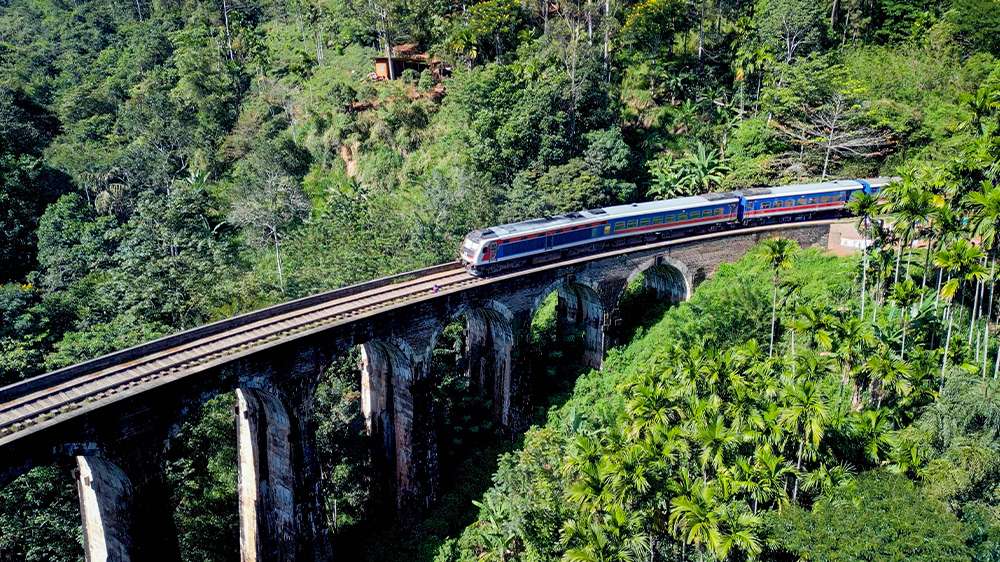
Buses in Sri Lanka
If you want to experience local life up close, bus travel is one of the cheapest and most common ways to get around in Sri Lanka. They connect almost every town and village, run frequently, and cost just a few hundred rupees per ride.
Drivers are known for their speed and sharp overtakes, so try to grab a seat whenever possible — standing for long rides isn’t for the faint-hearted!
You can hop on and off almost anywhere along the route, and tickets are usually sold on board by a conductor. Always carry small cash, as cards aren’t accepted and change can be limited.
Here are two main types of buses:
- Normal local buses (red or blue): cheap, crowded, no air-conditioning, but full of energy and music
- Express or AC buses: faster and a bit more comfortable, great for long-distance routes like Colombo–Kandy or Ella–Matara
While buses can be hectic, they’re part of the real Sri Lankan travel experience — affordable and authentic.
Tip: Websites like busseat.lk and sltb.eseat.lk can help check schedules.
Tuk Tuk Rental in Sri Lanka
Renting a tuk-tuk is one of the most fun and flexible ways to get around in Sri Lanka. It gives you total freedom to explore at your own pace — from misty tea hills to sunny coastal towns — without relying on bus schedules or pricey transfers.
You can rent a tuk-tuk in major tourist areas like Colombo, Kandy, or Ella, and return it elsewhere if you plan a one-way trip. Expect to pay around $15–25 per day, depending on the company, duration, and model. Most rentals include basic insurance and breakdown assistance.
Before you hit the road, you’ll need to get your local driver’s permit from the Automobile Association of Ceylon (AAC) in Colombo. Bring your passport, an International Driving Permit (IDP), and a few passport photos. The process is straightforward and takes about 30 minutes.
Driving a tuk-tuk is relatively easy once you get used to it, but traffic in Sri Lanka can be chaotic — especially in cities. Take it slow, stick to the left side of the road, and always honk before overtaking.
If you’re planning a trip across the island, this might be the best way to travel around Sri Lanka for independent travellers.
Tuk-Tuk Rental.com
One of the most reputable companies for tuk-tuk rental in Sri Lanka is TukTukRental.com. They operate as a social enterprise, partnering with local tuk-tuk owners, and help you arrange everything from permits to insurance and 24/7 support.
Prices start around $20–24 per day, depending on your route and rental duration. You can also choose one-way rentals, add surf racks, or upgrade to electric models.
Visit tuktukrental.com for full details on pricing, inclusions, and booking options — they make the whole process easy and hassle-free.
Pros & Cons of Renting a Tuk Tuk in Sri Lanka
Pros:
- Total freedom — explore remote beaches, waterfalls, and small towns at your own pace
- Budget-friendly compared to hiring a private driver
- Great way to experience local life and connect with people on the road
Cons:
- Busy traffic and unpredictable driving conditions, especially in cities
- Requires a local driver’s permit from the AAC in Colombo
- Not ideal for long cross-country drives if you’re short on time
Scooter Rental in Sri Lanka
Renting a scooter is one of the easiest and most convenient ways to get around in Sri Lanka, especially in coastal towns like Mirissa, Unawatuna, Hiriketiya, or Tangalle. It gives you the freedom to explore nearby beaches, viewpoints, and cafes at your own pace without relying on tuk-tuks or public transport.
Daily rentals usually cost between ~1,500–2,500 LKR ($5–8), depending on the area and the scooter’s condition. You can rent them directly from guesthouses, hostels, or small local rental shops — just make sure the brakes, lights, and tyres are in good shape before setting off.
To drive legally, you’ll need an International Driving Permit (IDP) along with a local driving permit issued by the Automobile Association of Ceylon (AAC) in Colombo. Many travellers skip this step, but it’s required for insurance to be valid in case of an accident.
If you prefer a reliable company that handles everything for you, check out:
- Sri Lanka Bike Rent: Offers scooter and motorbike rentals across the island with pick-up and drop-off options, insurance, and support
- Bikes Rent Sri Lanka: Another trusted provider offering country-wide delivery, a variety of models, and flexible rental durations
Always wear a helmet (it’s the law), carry your passport copy and license, have travel insurance and avoid driving after dark, as roads can be poorly lit. Coastal routes are scenic but busy, so take it slow and enjoy the ride — it’s truly one of the best ways to travel around Sri Lanka if you’re comfortable on two wheels.
Car Rental in Sri Lanka
Renting a car is one of the most comfortable ways to get around in Sri Lanka, especially for longer journeys or when travelling with luggage. While self-driving isn’t very common due to chaotic traffic, you can easily hire a car with a driver for around $50–70 per day, including fuel. It’s ideal for routes like Colombo to Kandy, exploring the Hill Country, or visiting several towns along the south coast.
For shorter rides or airport transfers, use the PickMe app, which is similar to Uber and operates in most urban areas such as Colombo, Kandy, and the south coast.
If you prefer to drive yourself, check DiscoverCars for the best rental options and rates. You’ll need both an International Driving Permit (IDP) and a local driving permit from the Automobile Association of Ceylon (AAC) in Colombo.
Still, for most travellers, hiring a local driver is the easiest and safest way to travel — it lets you sit back, enjoy the views, and skip the stress of navigating Sri Lanka’s busy roads.
Tip: During our one-month trip, we mainly relied on public transport for long journeys and booked short car transfers or tuk-tuks using the PickMe app or through our guesthouses. It was affordable, simple, and worked perfectly for our itinerary.
Cost of Travel in Sri Lanka
Wondering how much it costs to get around Sri Lanka? Transport here is generally affordable, whether you’re travelling by scenic train, local bus, or renting your own scooter. Prices can vary depending on distance, comfort, and location, but here’s a quick breakdown to help you plan your budget.
|
Transport Type |
Average Cost |
Ideal For |
Travel Time |
|---|---|---|---|
|
Train |
From 200 Rs |
Scenic routes |
Slow |
|
Bus |
From 100 Rs |
Budget Travellers |
Moderate |
|
Tuk-tuk |
80-150 Rs |
Short rides |
Fast |
|
Private car & driver |
10,000-18,000 Rs/day |
Comfort & convenience |
Flexible |
|
Scooter rental |
1,500-2,500 Rs/day |
Local exploring |
Flexible |
Note: These are average prices and may vary by region or season. Always check and agree on the cost before travelling, especially for tuk-tuks or private transfers.
Tips for Travelling Around Sri Lanka
Travelling in Sri Lanka is part of the adventure — it’s affordable, fun, and sometimes unpredictable. These quick tips will help you move around more easily and avoid common travel hiccups.
- Use PickMe or Uber in larger cities to compare prices and avoid overpaying
- Carry small cash for public transport and tuk-tuks, as many places don’t accept cards
- Plan extra time for journeys — delays are common on trains and buses
- Avoid night travel where possible, especially on rural roads with poor lighting
- Check schedules locally — train and bus times often change without notice
- Bring snacks and water for long-distance rides (there aren’t always stops)
- Stay alert at stations and watch out for scams offering “special” or “express” tickets
These small steps can make a big difference when planning your journey and understanding Sri Lanka logistics. Take it slow, stay flexible, and enjoy the ride — getting around Sri Lanka like a pro.
Tip: Before you go, make sure you’re covered with SafetyWing travel insurance — it’s affordable, flexible, and ideal for digital nomads.
Final Thoughts
Getting around Sri Lanka isn’t always smooth — the buses can be wild, trains can be slow, and plans often change last minute. But that’s exactly what makes travelling here so memorable. Every journey becomes part of the story, whether it’s hanging out of a train door through the tea hills or riding a tuk-tuk along the coast at sunset.
It’s a country that rewards patience, curiosity, and a sense of humour. Take it slow, stay flexible, and embrace the adventure — that’s the real beauty of travelling in Sri Lanka.
If you’re still planning your trip, check out my 1-Month Sri Lanka Itinerary and Sri Lanka Travel Guide for more tips, routes, and inspiration.
Get Inspired
Join us on a journey through Sri Lanka — an island of ancient cities, misty tea fields, and golden beaches. During our 1-month trip, we explore Anuradhapura and Polonnaruwa, climb Pidurangala Rock in Sigiriya, visit the Dambulla Cave Temples, and step inside Kandy’s Temple of the Tooth. We’ll also taste tea in Nuwara Eliya, ride the scenic train to Ella for the Nine Arches Bridge, and relax on the south coast at Dickwella, Hiriketiya, Mirissa, and Unawatuna.
Sri Lanka is packed with history, culture, and natural beauty — this video is your perfect inspiration for planning a trip across the island.

